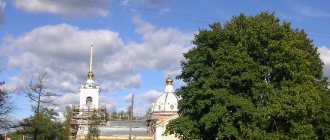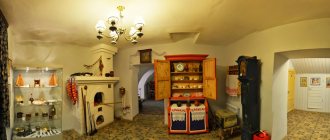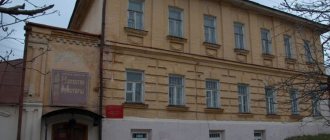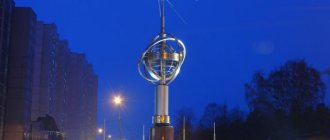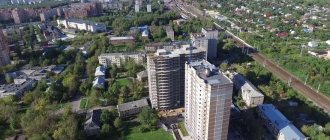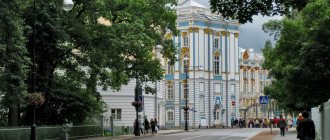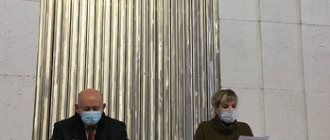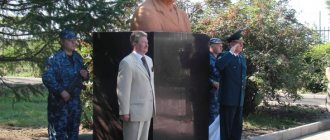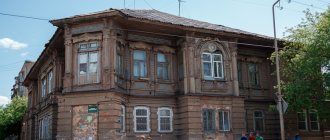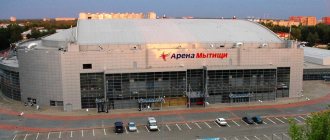The village of Vyatskoye (Yaroslavl region) is a highly advertised tourism brand today. Travel agencies position it as an open-air museum, a village of exemplary maintenance, or a village that really wanted to become a city. Now a huge number of tourists come here every year who want to see ancient monuments, the true face of the Russian hinterland and touch the ancient Orthodox shrines. Is it worth spending time on this trip and what attractions can you see in Vyatskoye?
Vyatskoye: TOP-3 most interesting places
There are so many attractions in the Yaroslavl village that tourists sometimes get lost and don’t know what is best to see first. You should start getting acquainted with the historical complex from its very first museum and main shrines.
Museum of Russian Entrepreneurship
- Address: Sovetskaya st., 9.
Vyatskoye is called a merchant village. It is not surprising that one of its main attractions is the Museum of Merchants. The collection was presented to the public at the end of 2008; the most suitable place was chosen for the collection - the house of the merchant I.I. Galochkina.
Most of the exhibits are in one way or another connected with the daily life of traders. The museum houses folk costumes, dishes, and musical instruments.
Some exhibitions are related to the history of the region as a whole. In one of the halls, the interior of a public school was recreated. A separate exhibition is dedicated to the famous fellow countryman of the villagers - Bishop Simon (Novikov), who headed the Ryazan Metropolis for more than 30 years.
Church of the Resurrection
- Address: Pervomaiskaya street.
In the very heart of the settlement, on the banks of the Ukhtomka River, the domes of the Resurrection Church soar upward. The five-domed stone church was built in 1750. The 30-meter bell tower is the tallest building in the village.
The temple has two chapels, one consecrated in honor of St. Gregory the Theologian, the second in honor of Archangel Michael.
One of the shrines of the temple is the icon of Panteleimon the Healer, into which particles of the saint’s relics are embedded. The image of the great martyr is revered as miraculous. Also inside the temple, original wall paintings from the late 18th and early 19th centuries have been preserved.
Yerekhtan source
- Address: Seredskaya st., 4A.
The holy spring in the center of Vyatskoye is popular among pilgrims and tourists. It is believed that the water from this spring gave a unique taste to the famous Vyatka pickled cucumbers.
The healing properties of the spring have been known since the 19th century; experts have found that its water contains a large amount of useful microelements, such as magnesium, potassium and calcium. According to the chemical composition of the water, the Yerekhtan spring is close to the world famous springs of Baden-Baden. In 2008, the key itself and the area around it were improved.
A cross-shaped font was built over the spring, and a small bell was hung behind it. In the center of the cross there is a concrete pedestal on which the icon of the Mother of God “Life-Giving Spring” was placed.
Museum "Rooms of the merchants Urlov brothers"
On Yaroslavskaya Street, tourists can visit the museum “Rooms of the Merchants of the Urlov Brothers.” At one time, two hotels were built in the village. They were built for guests of different social groups. In these hotels, the Vyatka merchants, the Urlov brothers, constantly kept several rooms (“numbers”) for their guests.
In the museum, the guides will show tourists what hotel rooms were like for the sophisticated guests of the Urlov brothers. The entire interior of the rooms is original.
The museum is interesting because you can sit on the sofas of the room, play a musical instrument that is in the room, and even give tourists the opportunity to try on the clothes of the luxury room staff of those times.
The museum management does everything so that during their stay in the museum the visitor can feel like a guest in hotel rooms of the 19th century.
Address: Yaroslavskaya street-1.
What other museums are worth seeing in Vyatskoye
The tiny village of Vyatskoye is a real kingdom of museums. The local historical and cultural complex, which includes 12 museums, is considered one of the best in the country.
Kitchen Machinery Museum
- Address: Pervomaiskaya st., 28.
The museum on Pervomaiskaya Street contains the forerunners of combines and other kitchen equipment that make the life of a modern housewife so much easier. The collection is quite extensive and is divided into six thematic rooms; each room reflects a certain stage in the development of kitchen machinery and houses hundreds of exhibits.
The first room recreates the interior of a typical late 19th century kitchen. This is followed by examples of ovens, then visitors will be able to see coffee grinders, toasters, mechanisms for stuffing sausages, honey extractors, apple peelers, the first refrigerators, the first washing machines and much more. It is noteworthy that decades ago Vyatka craftsmen whipped butter in “washers”.
One of the halls contains all the utensils necessary for tea drinking: samovars, dishes, sugar tweezers, cutlery. Of particular interest are the first meat grinders and mixers, which differ significantly from their “descendants”.
Museum of the Returned Shrine
- Address: Davydkovskaya st., 37.
Another unique exhibition was opened in 2014. Its peculiarity is that the collection is based on... only one exhibit - a rare edition of the Gospel of the 18th century. The massive book was printed in 1758, and a Moscow publishing house took on the work.
Capital craftsmen made a frame for the book from gold and silver. 18 years later, Bishop Simon gave the jewel to the residents of Vyatka. During the Russian Empire, the Holy Scriptures were kept in the Church of the Resurrection.
The name of the museum speaks for itself: the shrine disappeared in the difficult post-revolutionary years and was returned to its “homeland” quite recently - in 2014 - after a long fruitless search. Today, the priceless specimen is kept under stone arches in a special glass display case.
You cannot touch the fragile exhibit, so a special interactive stand has been created to familiarize yourself with the book. In addition to the Gospel, in the museum you can see works of modern sculptors and artists.
Russian bathhouse in black style
- Address: Seredskaya street.
One of the Vyatka folk museums is dedicated to bathing traditions. In Rus', at any time of the year, people steamed and washed in log baths. The baths were heated black, that is, the stoves were heated up very much, the smoke went into the room, and the wooden walls turned black with soot. Today, such a tradition has been preserved only in some remote villages.
Vyatskoe is the happy owner of real century-old buildings. The museum consists of five original buildings from the late 19th century: a locker room, a washing room, a steam room and rooms in which people rested after swimming. All the buildings stand on the banks of the Ukhtanka River; the builders deliberately placed the bathhouses closer to the river in order to collect water from it for the washing room and steam room.
Gorokhov's House
- Address: Sovetskaya street, 8.
The house-museum of the merchant Gorokhov consists of two parts and is also called the museum of the trading peasant. The exhibitions are dedicated to two aspects of the life of a Vyatka merchant: everyday life and business.
In the residential building where the businessman’s family lived, original household items that belonged to the Gorokhovs were collected. The cellar once stored the merchant's main product - the famous Vyatka pickled cucumbers, prepared according to a special recipe.
In the adjacent two-story brick building you can see how the entrepreneur conducted his business. On the first floor there is a sign “Trading of the Gorokhovs”; there was a trading shop with goods; on the second floor there was a merchant’s office, in which he worked with papers, negotiated and calculated income and expenses.
The museum began its work in 2007. Lyubov Gorokhova, a direct descendant of the famous merchant, helped open the museum and recreate the atmosphere. It was she who saved the house and things of her ancestors.
Child's world
- Address: Davydkovskaya st., 2.
The richest collection of Soviet-era toys was collected by Muscovite I.L. Buseeva-Davydova, a passionate collector and art critic. In 2013, Irina Leonidovna donated her collection to the museum complex.
In subsequent years, the fund was replenished with new toys; currently it includes more than 2,500 assorted exhibits. The Children's Toy Museum is located where you least expect to see it - in the building of a former fire station.
History of printing
- Address: Yaroslavskaya st., 4.
The Printing Museum is located in a beautiful brick building in the center of the village. The collection is based on 15 ancient presses on which books and periodicals were printed. The museum owes its existence to N. Serdyukov; it was he who collected and preserved valuable equipment.
The hand looms are in excellent condition and still work. Guests of the exhibition can not only observe the creation of a printed sheet, but also take part in this difficult but fascinating process.
Museum of Science and Industry
- Address: Sovetskaya street.
The large museum on Yaroslavskaya Street contains all kinds of equipment with which peasants obtained food and arranged their lives. The collection includes a variety of looms, from weaving to metal-cutting, straw cutters and other useful inventions of the 19th century.
A separate place is given to more advanced and complex mechanisms; the first models of watches, telephones, tube receivers, as well as adding machines and televisions are displayed in the adjacent halls.
It is difficult for modern people to imagine what some devices were used for and how they operated, so museum staff explain and sometimes clearly demonstrate the purpose of the exhibits. Many devices, despite their advanced age, still work.
House of Angels
- Address: Yaroslavskaya street.
Gentle, airy, sweet - this is how one can characterize the museum opened near the Vyatka restaurant. A rich collection of angelic images from around the world opened in the spring of 2011. In the halls you can see paintings, souvenirs and even stained glass windows depicting heavenly messengers.
A special place of honor is occupied by an exhibition dedicated to the famous villager Pyotr Telushkin. The master became famous throughout the country thanks to an amazing story that happened to him in the capital city of St. Petersburg. In 1830, the Peter and Paul Cathedral required a very unusual and technically complex repair: the metal angel on the 40-meter spire had a lopsided wing, and the spire itself needed painting. The Vyatka craftsman not only coped with the task, but also completed all the work alone and with the help of only a rope.
Peter had a risky, deadly task ahead of him, but, fortunately, a month and a half of hard work was crowned with success. The figure of the angel was restored, and Telushkin today bears the title of the world's first industrial climber.
Numbers of the Urlov merchants
- Address: Yaroslavskaya st., 1.
Decades ago, a hotel was called rooms, or numbers in the old style. In the 19th century, the Urlov merchant brothers built two hotels of varying degrees of convenience in the village. One was intended for wealthy guests, the other for poorer guests.
The interior of some rooms has been preserved from former times; the furniture, household items, and decor are original. In such an elegant setting, museum visitors can imagine themselves as aristocratic guests, or try on the role of a maid or other servant.
Sounds of time
- Address: Vyatskoye village, Nekrasovsky district.
The romantic name “Sounds of Time” belongs to the loudest of the Vyatka museums - the Museum of Musical Instruments. The museum contains devices that were used to record and play music a century ago:
- gramophones,
- music boxes,
- pianolas,
- gramophones,
- barrel organs,
- the rarest Brugger organ.
The last exhibit is of particular value: only four copies have survived throughout the country, including the Vyatka one. The Russian barrel organ, decorated with three oil paintings, is also a rare and expensive instrument.
Museum of Russian Fun
- Address: st. Seredskaya.
The life of Russian peasants at all times was full of hardships and hardships, but even in the most difficult years, people found a way to at least temporarily throw off the yoke of worries and have fun. The most massive celebrations were held on Maslenitsa and Krasnaya Gorka, when carousels, swings and a Ferris wheel were erected on squares or hills.
The small fun museum is located in the open air and is a kind of amusement park without complex mechanisms. All exhibits are made of wood and metal and brightly painted. Dear guests are greeted by girls and boys in folk costumes, who tell how to ride ancient rides correctly and explain the rules of old forgotten games.
Ecology
In the village of Vyatskoye, as in the entire Yaroslavl region, there are certain environmental problems. In addition to a large number of attractions, there are enterprises nearby that pollute the environment.
There is severe pollution of water protection zones on the Pechegda and Volga rivers with waste discharged from the Mendeleev Oil Refinery. Tar storage ponds were installed back in the USSR, when it was believed that this method of disposal was completely safe.
However, there is a real threat of environmental disaster on the Volga in the event of any flood, as a result of which toxic tar waste could enter the river.
An equally significant problem is the poor quality of drinking water. In almost 40% of all reservoirs used as drinking water, the content of chemical elements is exceeded, the remaining 60% do not meet the standards for microbiological indicators.
In addition to harmful discharges into water, significant damage to water quality is caused by worn out and old pipelines , which have long expired.
The third big problem associated with the environmental situation in the Yaroslavl region is air pollution due to the large number of cars.
A more unusual problem, but clearly existing and environmentally related, is the improper disposal of mercury lamps. Mercury vapor is colorless and odorless, but is very poisonous.
Due to environmental illiteracy, the population throws hazardous household waste into ordinary garbage containers, which is a gross violation. Mercury lamps must be handed over to specially equipped collection points.
Another environmental problem of the Yaroslavl region is the presence of the Rybinsk Reservoir , which has almost completely exhausted the corrosive wear of the valve gates on the sluices, which has a negative impact on the purity of the water.
The main temples and churches of Vyatka
Most of the religious residents of Vyatka are Orthodox Christians or Old Believers. In the village and surrounding area you can visit two functioning churches and a chapel-font, as well as explore the ruins of an ancient Old Believer parish.
Church of the Assumption of the Blessed Virgin Mary
- Address: Proletarskaya street.
On the bank of the Ukhtomka River, towering above the houses, stands an ancient Old Believer temple. The monumental structure inspires both awe and inexplicable awe. The once magnificent church now looks like a dead stone: the crowns are broken, the vaults of the aisles have collapsed, the wind unhinderedly rushes into the empty church through broken windows and leaky roofing.
The Assumption Church was built in the Baroque style at the end of the 18th century; local merchant-Old Believer G. Kubanin donated money for the construction. The building was consecrated in 1780. In addition to the main Assumption altar, the church had four chapels: Saints Cosmas and Damian, Apostles Peter and Paul, Saint Tikhon of Amathunta and Saint Nicholas of Myra.
In 1930, the temple was closed and, as often happened in the USSR, turned into a warehouse. A few years later, the building became ownerless, and natural disasters continued the destructive work begun by people. These days, the ancient church is still abandoned and needs restoration.
Chapel-font
- Address: Seredskaya st., 4A.
A few meters from the Yerekhtan spring there is a colorful chapel in honor of the “Life-Giving Spring” icon of the Mother of God. Once upon a time, the spacious building housed the Petryaevs' forge; in 2008, the building was turned into a chapel and consecrated.
Today, there is a cross-shaped font inside, into which water is supplied from a holy spring. Icons hang on the walls, and lighted candles are constantly burning in candlesticks on the sides of the font. The chapel was painted by the titled artist N.A. Mukhin.
Elokhinsky Assumption Church
- Address: Nekrasovsky district, Elohino village.
The trading village was once considered one of the centers of the Old Believers not only in the Yaroslavl province, but throughout the entire Russian Empire. The only functioning Old Believer church has been preserved in the neighboring village of Elohino, which is located a short walk from Vyatskoye.
The beautiful red brick building was built in 1908. Soon a parochial school was opened at the temple. Ancient icons and wall paintings have been preserved inside. The first rector and founder of the community, Vasily Vitushkin, was buried at the temple. The memory of the priest is passed on from generation to generation.
For visitors of other faiths there is a set of rules, for example, a guest must cross himself with two fingers, not three. To get into the church, you must fulfill all the conditions set by the Old Believers.
Important information.
When visiting the village, you need to take into account that all museums are open from 11:00 to 19:00, without lunch, Monday is a day off. In the village there is a hotel-museum “Vyatskoye” where you can stay, and there is also a restaurant-museum where you can have a snack. You can get there by bus from Yaroslavl, which runs from the Zavolzhye bus station (Cosmos shopping center 2, Yaroslavl, Aviatorov Ave., 149), the travel time is just over an hour. And also by car, travel time is 40-45 minutes from Yaroslavl.
Famous Vyatka architecture
The village has preserved about fifty monuments of civil architecture, among which merchant houses and an ancient public school stand out.
House with lions
- Address: st. Seredskaya, 1.
The house of the Old Believer merchant I. I. Galochkin is one of the most beautiful buildings in the village. The two-story brick mansion is skillfully decorated; the main “highlight” of the facade is the stucco lion faces, which “bare” their fangs between the windows of the second floor. The building was erected at the end of the 19th century; the merchant’s family occupied only a few rooms, while trade took place in the rest. At the beginning of the 21st century, businessman O. Zharov bought and restored the house.
Kokoshkin's House
- Address: s. Vyatskoye, Nekrasovsky district.
Vyatka photographer Kokoshkin also built a beautiful mansion in the metropolitan style in his native village. The two-story brick building is located near the Church of the Resurrection. Several years ago the house was restored and fits perfectly into the architectural appearance of the museum complex. The century-old building is recognized as an architectural monument.
Public school building
- Address: Davydkovskaya st., 25.
In the mid-19th century, the education system began to actively develop in Vyatskoye. In 1842, the first public school in the village was opened on the second floor of the volost government building. Initially, training took only three years, during which time children managed to learn to read and count, and gained general knowledge about the world. Over the years, more and more peasants sent their sons and daughters to school in order to teach them to read and write. In 1865, the school was transformed into a zemstvo school.
In 1908, a good-quality brick building with two floors was built. In the 1930s, schooling was extended to 10 years. The Vyatka school produced such outstanding graduates as Metropolitan Simon (Novikov), Hero of the Soviet Union, girl sniper Aliya Moldagulova and General V. Ryzhonkov. Nowadays, all rural children, as well as children from several neighboring towns and villages, study at the institution.
Fire station
- Address: Davydkovskaya st., 2.
It is impossible not to notice the ancient fire station building while walking around the village. The large two-story building with bright red decoration on the facade immediately catches the eye of passersby. There is a real fire tower on the roof, and at the entrance there are carts with fire pumps. Today, inside the depot there are several museums and a cinema hall “Cinematograph” for 50 people.
Leisure
Photo from the site https://vk.com/vyatskoeselo
In Vyatskoye you can rent bicycles, scooters, a badminton set, rent a gazebo, grill and skewers for a picnic. A rope playground was created for children in Vyatskoye, and a billiards area for parents. In winter you can go ice skating, skiing, cheesecakes and ice skates.
Popular monuments in Vyatskoye
There are few monuments in Vyatskoye, but each of them has its own interesting history and is important for the village residents.
Monument to Alexander II
- Coordinates on the map: 57.864722, 40.267222.
The copper bust of the emperor-liberator of the peasants is the most recognizable monument in the village. The monument was made in 1911 by sculptor A. Opekushin and took its place near the volost administration.
The opening was timed to coincide with the fiftieth anniversary of the abolition of serfdom. The beautiful sculpture did not decorate the village for long. Just as real rulers were dethroned, so the copper emperor was dethroned from his pedestal. In 1918, the place of Alexander II was taken by a bust of Karl Marx.
The modern monument is an exact copy of the original creation. Master V. Alaev found old photographs of the first sculpture in the archive and repeated the work of his predecessor. In 2008, the bust of the sovereign was erected in its original place.
Monument to fellow countrymen
- Address: Sovetskaya street.
The mournful memorial in the center of Vyatskoye is dedicated to all natives of the village, both soldiers and civilians, who died during the Great Patriotic War. The monument was erected in the 70s of the last century and since then has been reconstructed several times.
In the center of the memorial is a bronze figure of a soldier waving his cap while looking into the heavens. In front of the statue there were rows of marble slabs with lists of fallen defenders of the Motherland. In 2010, a memorial plaque was added in honor of two villagers-Heroes of the Soviet Union - A. Moldagulova and S. Egorov.
Monument to N.A. Nekrasov
- Address: Davydkovskaya street, 4.
Vyatskoye is located in the Nekrasovsky district, the administrative center of which was named after the great Russian poet Nikolai Nekrasov. The future writer spent his childhood in these parts. In 2018, a monument to Nikolai Alexandrovich appeared in the village, created by artist E.V. Easter. Elena Vasilievna depicted the poet sitting thoughtfully on a tree trunk.
Bronze Nekrasov is dressed in a hunting suit, but is holding not a gun in his hand, but a notebook and pencil, as if he is preparing to write the lines of a new poem into it. It is noteworthy that the monument to the writer was unveiled not in the village named after him, but in Vyatskoye, because it is here that the annual festival “Days of Nekrasov” takes place.
Monument to Vyatka cucumbers
- Address: Yaroslavskaya street.
Pickled cucumbers are one of the symbols of the village. Centuries ago, Vyatka cucumbers were known outside the province; they say that local pickles were successful even in St. Petersburg. The gifts of nature were kept in large wooden barrels and stored in cellars.
Recently, the villagers erected a monument to their “signature” product. The amusing monument is a pyramid of cucumber barrels, at the foot of which sits a plaster merchant. An enterprising merchant greets guests at the entrance to the village and with his whole appearance makes it clear that Vyatskoye is the real cucumber capital of Russia.
Climate
The Vyatskoye village, located near Yaroslavl, has a temperate continental climate, which makes it similar to numerous cities in the central part of the European zone. Cool and humid weather is formed under the influence of air masses from the Atlantic, softening the frost and increasing the amount of precipitation.
Average temperature data calculated taking into account the last few years:
| Month | Day °C | Night °C | Rating on a scale of 5 points |
| January | -11,2 | -14,8 | 2,5 |
| February | -5,5 | -10,4 | 2,5 |
| March | +3,0 | -3,5 | 4,2 |
| April | +11,0 | +2,8 | 4,5 |
| May | +17,5 | +7,8 | 4,7 |
| June | +22,0 | +12,3 | 4,8 |
| July | +25,2 | +13,3 | 4,8 |
| August | +24,8 | +13,6 | 4,9 |
| September | +17,2 | +6,8 | 4,6 |
| October | +3,8 | -2,7 | 4,2 |
| November | -1,8 | -5,6 | 2,5 |
| December | -7,5 | -10,3 | 2,5 |
According to the comfort rating, August is considered the most successful month for a trip to the village of Vyatskoye.
Average climatic conditions in the Vyatka village of the Yaroslavl region:
| Month | sunny days | precipitation in mm | wind speed in m/s | rainy days |
| January | 0 | 25,7 | 4,2 | 1 |
| February | 2 | 19,8 | 4,3 | 1 |
| March | 4 | 33,4 | 4,0 | 1 |
| April | 5 | 42,9 | 3,8 | 3 |
| May | 17 | 50,8 | 3,5 | 4 |
| June | 16 | 53,3 | 3,4 | 3 |
| July | 17 | 65,1 | 3,1 | 4 |
| August | 19 | 42,1 | 3,3 | 2 |
| September | 7 | 56,3 | 3,5 | 5 |
| October | 3 | 45,7 | 4,0 | 2 |
| November | 3 | 46,2 | 4,0 | 1 |
| December | 2 | 36,4 | 4,4 | 1 |
Holy springs of Vyatka and surrounding areas
Vyatskoye attracts thousands of pilgrims thanks to its famous holy springs. Water from local springs is rich in nutrients and has healing properties.
Panteleimonov source
- Address: Sovetskaya st., 10.
In the backyard of a rural hotel there is a spring consecrated in honor of the Holy Great Martyr Panteleimon the Healer. In 2011, a small white chapel with a golden roof, crowned by an onion dome, was erected over the spring.
Water is supplied through a tap, and anyone can easily quench their thirst or get water for the road. Many people believe that holy water from the spring can heal eye diseases. The hotel courtyard is very neat and clean; pilgrims can stroll along the paths and relax on the benches next to the chapel.
37 keys
- Address: 2nd Naberezhnaya street.
Another place of pilgrimage for believers is a pond in which 37 springs flow together. On the shore of this landmark, on a small hill, stands a three-dimensional icon of the Most Holy Theotokos with the Child Christ in her arms.
In winter, on the eve of the feast of the Epiphany, an ice hole-Jordan is made on a frozen reservoir for immersion in icy water. The embankment of the pond is well-maintained; neat steps and tiled paths lead to the image of the Blessed Virgin Mary and the descent.
Nikolin source
- GPS coordinates: 57.866111, 40.266111.
The source is not as famous and popular as other Vyatka springs, but it deserves the attention of tourists. In 2010, villager Nikolai Koryakovtsev used his own funds to decorate the spring, built a small well from stones and built a roof with a cross over it.
It is not so easy to notice the well; the spring gushes out of the ground next to simple wooden houses that stand on the banks of the river away from the main attractions of the village.
See also the sights of other cities of the Yaroslavl region:
- Rostov the Great, Uglich, Poshekhonye,
- Gavrilov-Yama, Tutaeva, Rybinsk,
- Yaroslavl, Pereslavl-Zalessky
Vyatskoye has enormous tourism potential not only for the Yaroslavl region, but also for the whole of Central Russia - already now the number of tourists is hundreds of times higher than the number of local residents. Even foreign experts recognize the significance of the village; in the near future it may even be included in the UNESCO World Heritage List.
Healthy water
Photo from the site https://vyatskoye-selo.rf/
Spring water in Vyatskoye is compared in terms of mineral properties and benefits with the waters of the German resort of Baden-Baden. It smells like hydrogen sulfide and contains iron oxide , which replenishes the deficiency of the element in the body, strengthens the immune system and tones the muscles. The water is really tasty, but cold: a constant temperature of seven degrees. From the Yerekhtan spring, water flows into the chapel-font, where you can perform the ritual of ablution .
“They are jealous, ha!”
The Zharovs enthusiastically restore old houses: both for sale and for the museum complex
Photo: Maxim Sher, Kommersant
However, it was not possible to stop anyone from drinking. As the same Nekrasov wrote: “Oh, Orthodox thirst, How great are you!” Even some locals who got work from the Zharovs could not restrain themselves. They worked flawlessly and diligently. But as a holiday - that's it. They went on a binge for several days. “I had such a woman on my staff,” says Larisa Anatolyevna. “There was just a big arrival of tourists, there weren’t enough hands, but she didn’t show up for work. Everyone knew that she started drinking, but then I told her: “I’m sick, right? Well, at least give me a warning.” We talked to her, she seemed to understand. But - until the next holidays. I challenge her again for a conversation, I talk to her more harshly. And she: “Anatolyevna, my relatives just came to see me, you understand!” In general, the third time I had to fire him.”
Larisa Anatolyevna believes that the best workers are Uzbeks and Tajiks, who also settled in Vyatskoye. At least they don't drink. Although it also happens that mistakes are made at work. Oleg Alekseevich, a staunch liberal, known for his opposition views - even his friends, laughing, suggested that he refuse the State Prize in favor of the Bolotnaya Square Foundation - admits that in working moments he can go through all stages of government - from liberal to dictator or ultra-right: “Sometimes I quarrel with my Tajiks, and such a Navalny rises inside ... "
But this rarely happens. Zharov gives the impression of a tactful and infinitely patient person. The workers respect him. At rural holidays, when handyman Dzhangir Shchermatov performs, they always announce: “And now - Oleg Zharov’s favorite singer: Johnny!” Jangir-Johnny always performs some new hit for the boss: “I love to sing. Because I live well. Now I’ll save up money, go to Tajikistan and get married, the bride is waiting there. And then I’ll transport her to Vyatskoye. It's good here. There is work, the people are cheerful, the village is beautiful, the skating rink is flooded in winter, you go to museums every day.”
But the fired citizens cannot stand the Zharovs. “And many pensioners simply hate them,” explains Nadezhda Volkova, who is walking with her mother and little son in the famous birch trees. “Why? Never! They are angry that he is rich, that he bought everything here. They are jealous." Mom, Lidia Nikolaevna, takes the floor: “They are jealous, ha!” This is what I say to everyone who is dissatisfied: you will remember how we used to live, before the Zharovs arrived. Forgot? They forgot that we didn’t have a single whole house in the center here, just stones, like after a bombing. And who would restore it, who needed it? No one! He was the only one found, so be grateful. Now our place is clean, beautiful, tourists come. It’s nice to go out into the center, show yourself, see people.”
